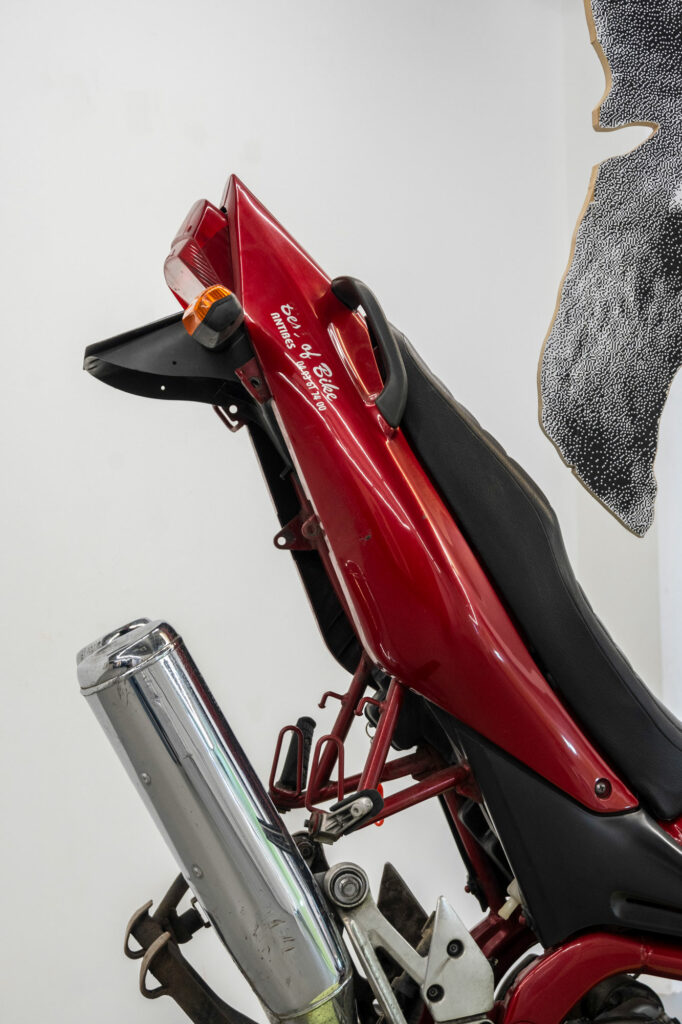Dans la mythologie grecque, Prométhée (en grec ancien Προμηθεύς / Prometheus, « le Prévoyant ») est un Titan.
Figure héritée du « transmetteur du feu », Prométhée est surtout connu pour avoir dérobé le feu sacré de l’Olympe pour en faire don aux humains. Courroucé par cet acte déloyal, Zeus le condamne à être attaché à un rocher sur le mont Caucase, son foie dévoré par l’Aigle du Caucase chaque jour, et repoussant la nuit. Le mythe de Prométhée est admis comme métaphore de l’apport de la connaissance aux hommes. Il est aussi évocateur de l’hybris (du grec ancien : ὕϐρις / húbris, est une notion grecque qui se traduit le plus souvent par « démesure ») la folle tentation de l’Homme de se mesurer aux dieux et ainsi de s’élever au-dessus de sa condition. À partir de ce mythe, Léo Fourdrinier use de son vocabulaire plastique ( la moto, le néon, la chimère ) pour donner corps au lien éternel qui unis Prométhée à son châtiment – l’aigle – ici abordé comme une séparation impossible entre deux êtres.
In Greek mythology, Prometheus (Ancient Greek Προμηθεύς / Prometheus, « the Foreteller ») is a Titan.
A figure inherited from the « transmitter of fire », Prometheus is best known for stealing the sacred fire from Olympus to give it to humans as a gift. Incensed by this disloyal act, Zeus condemned him to be tied to a rock on Mount Caucasus, his liver devoured by the Caucasian Eagle every day and repulsed at night. The myth of Prometheus is accepted as a metaphor for bringing knowledge to mankind. It is also evocative of hybris (from Ancient Greek: ὕϐρις / húbris, is a Greek notion that is most often translated as « excess ») man’s mad temptation to measure himself against the gods and thus rise above his condition. Based on this myth, Léo Fourdrinier uses his plastic vocabulary (motorbikes, neon lights, chimeras) to give substance to the eternal link between Prometheus and his punishment – the eagle – here approached as an impossible separation between two beings.



